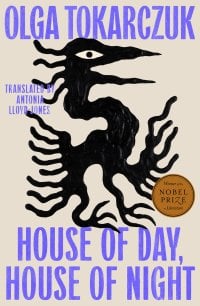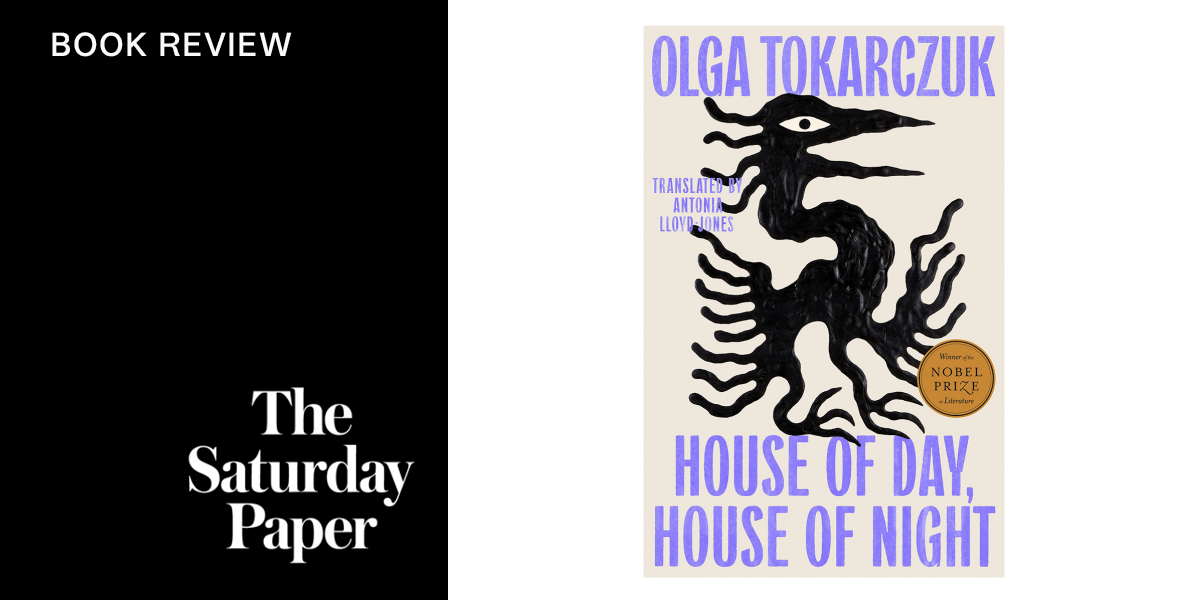House of Day, House of Night, by the Nobel Prize-winning Polish author Olga Tokarczuk, is a novel set in an unnamed but unusual village inhabited by a group of tragicomically damned villagers. A man named Franz Frost, who was once drafted into the Nazi Wehrmacht, crafts himself a wooden hat to protect himself from the baleful influence of a newly discovered planet that is giving him unsettling dreams. Ergo Sum, a classics teacher who was transported to Siberia as a young man when the Soviets invaded, finds himself transforming into a wolf.
This unlikely village with its unlikely population is situated next to the actual town of Nowa Ruda in south-west Poland, which was founded in 1363 as part of the Kingdom
of Bohemia and which in modern times has been marked by seesawing boundaries arising from World War II, when Nazi Germany and then Soviet Russia staged their brutal invasions.
The conjunction of the preposterously magical and the tragically real, of the fabled and the historical, tells us we are in the territory of magical realism, that genre made famous by Gabriel García Márquez’s One Hundred Years of Solitude. Tokarczuk’s village is reminiscent of the Colombian writer’s Macondo, as well as the town of Desperance in Alexis Wright’s Australian novel Carpentaria, demonstrating how literature is, as Tokarczuk described it in her Nobel Prize acceptance speech, a kind of “unus mundus” – a united world of the imagination.
That’s not to say, of course, that these novels don’t honour their cultural contexts and demonstrate their own precious idiosyncrasies. Tokarczuk names the unique style of House of Day, House of Night and another of her novels, Flights, as “constellation” novels in which “all things that exist are mutually connected into a single whole, even if the connections between them are not yet known to us”.
This is a useful way of characterising House of Day, House of Night, which rejects conventional narrative in favour of assembling fragments. They include the fairytale-like vignettes portraying Tokarczuk’s cast of eccentric characters; intermittent descriptions of dreams; mushroom recipes, which a prefatory translator’s note warns us against testing; apocryphal texts, including one advocating for the canonisation of a woman from medieval times; and musings on eclectic phenomena, from dahlias to astronomical charts. These musings are often oneiric and ironic in nature. They are never uninteresting. One, titled “Mismancy”, offers a list of different kinds of divination that the narrator has discovered on the internet:
“Aeromancy, divination by observing the air. Alectryomancy, divination using a cockerel. Anthropomancy, divination using human entrails. Cattabomancy, divination using vessels made of metal. Gastromancy, divination based on sounds coming from the stomach. Idolomancy, divination using statues, figurines and effigies.”
These are only some of the ways we have devised for reading the mystery of the world. The list goes on. We might find entertainment in this catalogue, but its appearance in a novel teeming with dreams, omens and prophecies makes clear that the mystery of the universe counts. To put it another way, in a metaphysical and even physical sense, the magic of our lives is real.
The novel is given coherence by the framing device of the first-person narrator, who lives in the village, and the continuing presence of Marta, the narrator’s neighbour. For all the narrative’s formal heterogeneity and faux-mythic encyclopaedism, it reveals an underlying interest in the elemental binary of night and day exemplified by the novel’s title.
The diurnal, Tokarczuk suggests, is at the heart of life’s mystery. As the title of one fragment announces, “Half of Life Takes Place in the Dark”. In a different fragment, Marta reflects on how “half of humanity” is asleep at any one moment while the other half is awake, and how “no moment on earth can be purely bright, intense and resonant, without being balanced on the other side of the planet by a dark, fluid, deaf and swirling moment”. In another fragment, a character observes: “Your heart works in the darkness, just like all your other organs … When our bodies disintegrate, it sinks into the darkness underground.”
The binary of life and death is important, with Tokarczuk emphasising that both living and dying – like waking and dreaming – must be appreciated if we are to stand a chance of understanding the mystery of existence. As the narrator puts it, “For some reason people have developed a liking for only one sort of transformation. They are fond of increase and development but not decrease and disintegration. They prefer ripening to decay.” Tokarczuk is almost unique as a novelist for imagining the death of characters as intensely and unforgettably as she imagines their lives.
House of Day, House of Night was first published in Poland in 1998, before being translated by Antonia Lloyd-Jones and published in Britain in 2002. Now Text has released this Australian edition, after publishing four of Tokarczuk’s other novels, all of them as extraordinary as this one. If you’re not familiar with Tokarczuk’s fiction, don’t put off any longer an encounter with the profound mystery at the heart of her work – and at the heart of yourself.
Text Publishing, 304pp, $34.99
This article was first published in the print edition of The Saturday Paper on
September 27, 2025 as “House of Day, House of Night”.
For almost a decade, The Saturday Paper has published Australia’s leading writers and thinkers.
We have pursued stories that are ignored elsewhere, covering them with sensitivity and depth.
We have done this on refugee policy, on government integrity, on robo-debt, on aged care,
on climate change, on the pandemic.
All our journalism is fiercely independent. It relies on the support of readers.
By subscribing to The Saturday Paper, you are ensuring that we can continue to produce essential,
issue-defining coverage, to dig out stories that take time, to doggedly hold to account
politicians and the political class.
There are very few titles that have the freedom and the space to produce journalism like this.
In a country with a concentration of media ownership unlike anything else in the world,
it is vitally important. Your subscription helps make it possible.

Purchase this book
House of Day, House of Night
When you purchase a book through this link, Schwartz Media earns a commission.
This commission does not influence our criticism, which is entirely independent.
Send this article to a friend for free.
Share this subscriber exclusive article with a friend or family member using share credits.
Used 1 of … credits
use share credits to share this article with friend or family.
You’ve shared all of your credits for this month. They will refresh on October 1. If you would like to share more, you can buy a gift subscription for a friend.
SHARE WITH A FRIEND
? CREDITS REMAIN
SHARE WITH A SUBSCRIBER
UNLIMITED
Loading…



